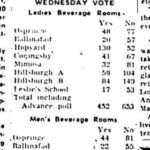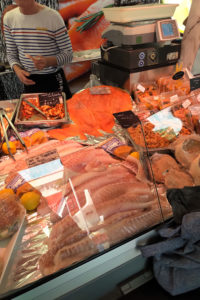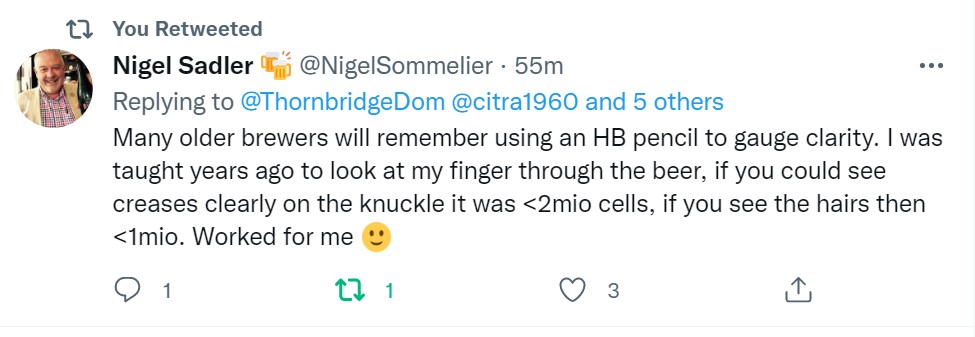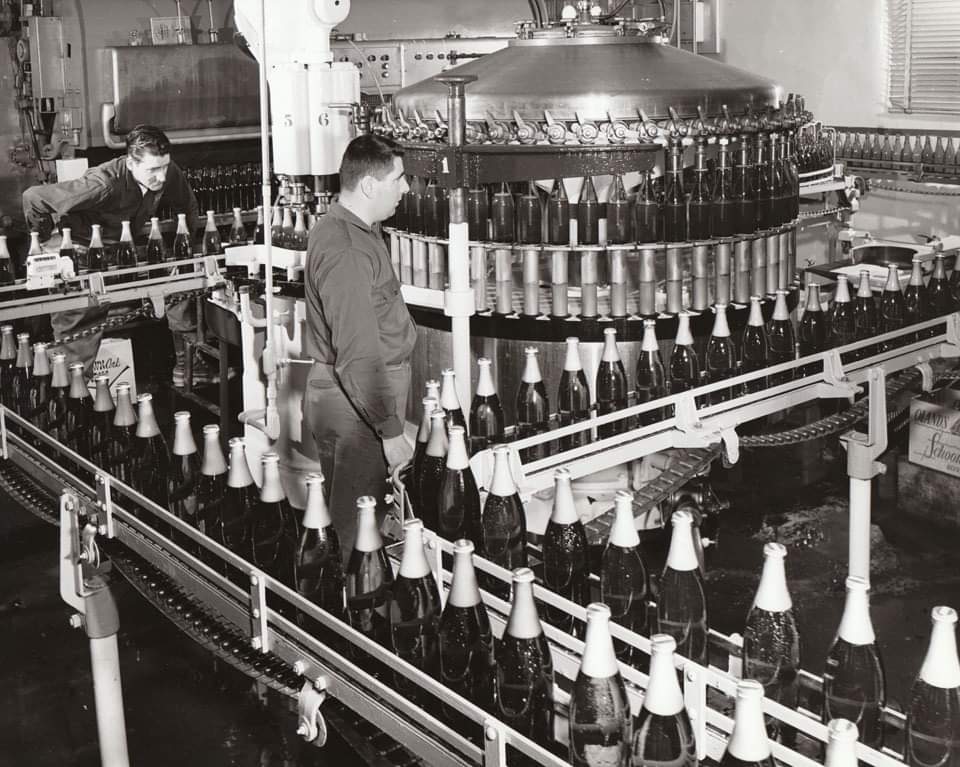 Mid-October. It is still pretty nice out there. Maples bursting with bright orange leaves around the neighbourhood. Still no frost in the forecast right up to the last days before November. It’s nutty. I have been more ant than grasshopper nonetheless and busily squirreling away preserved crops one way or another. Last night I was seen preserving ginger root in Sauternes. I have more to prepare and may do a batch soaked and submerged with bourbon. Not sure I would try this with beer… unless an imperial stout over 10% was nearby. That might be quite the tasty treat.
Mid-October. It is still pretty nice out there. Maples bursting with bright orange leaves around the neighbourhood. Still no frost in the forecast right up to the last days before November. It’s nutty. I have been more ant than grasshopper nonetheless and busily squirreling away preserved crops one way or another. Last night I was seen preserving ginger root in Sauternes. I have more to prepare and may do a batch soaked and submerged with bourbon. Not sure I would try this with beer… unless an imperial stout over 10% was nearby. That might be quite the tasty treat.
Back to the island, Boak and Bailey published a very impressionistic bit of writing about the experience of returning to hunting out beer in Germany after more than a decade. I say impressionistic primarily on the basis of the first word in the title of the bit is “impressions” so you can consider me a believer. And an exercise in an alternative approach it is very refreshing:*
A proper dodgy station, like all proper cities have, its plaza reeking of urine and scattered with beer bottles. Old hands rummaging in its bins, searching for treasure. Have fun in our city, the gateway says – have a drink or two, by all means – but don’t let it take you. Under the ring road, through the old city wall, and into a party on the move. Is it the last night of the year for a T-shirt, or the first for scarves and gloves? Wegbiers there and here. Döners here and there. Cream-coloured taxis nosing through crowds forced out into the street from hot bars with hot red lights.
 Elsewhere, Jenny P posted some interesting images this week of South African Chibuku, a sorghum beer made by SABMiller and its competitors which are sold in cartons – some of which have rather direct if not graphic health warnings. We used to get A+W root beer in those containers. When I were a lad…
Elsewhere, Jenny P posted some interesting images this week of South African Chibuku, a sorghum beer made by SABMiller and its competitors which are sold in cartons – some of which have rather direct if not graphic health warnings. We used to get A+W root beer in those containers. When I were a lad…
Lars posted a response to the thoughts of Martyn on the use of beer as the alternative to toxic water in the medieval period. As it is impossible to prove a negative, I lean away from arguments which include statements such as “I suggest that is impossible” and so I find Lars has the slightly more compelling argument:
Sweden and Denmark are further to the south, and a completely different story. In both countries the norm was to brew new beer every time the barrel was empty. Beer literally was the everyday drink against thirst to the point that in Denmark the most common name for the weaker beer was “dagligøl” (daily beer), while in Sweden beer was just known as “dricka” (drink) or “svagdricka” (weak drink). It’s difficult for people today to accept this as fact, but nevertheless people really did drink beer all day every day (where they could). Here’s a quote from a Danish farmer describing his own upbringing: “People drank a lot of beer, and only beer. Nobody would think of drinking water or milk.”
I would point out a couple of things that also guide me. Martyn bases his argument on reliable stats related to English grain production from 1275 to 1324 and holds that:
…to supply every adult in the country with three and a half pints of ale a day, the minimum to keep hydrated if you are not drinking water, would have required 83 per cent of the country’s entire grain production to be used for brewing.
This is a rational observation. But it fails to take into account that the less noticed lives of poor and country folk would have found their alcohol through fermentables which were (i) not those recorded for national stats and (ii) likely included or even relied on plants other than wheat, rye, barley and oats. We see, for example, plenty of past references to pea and bean malt. Consider this from the very Martyn himself in 2012. Consider also a brewer in my fair city just 207 years ago seeking a supply of peas. If these are added to the national supply, that 83 percent may drop, maybe even by double digits… say to 66% hypothetically. Also, he argues that “if the average is only one pint a day, that accounts for only 19% of total grain production.” But what else is it supposed grain production would go to in them there days other than bread and ale? Add to that Lars’ argument that we should not forget the poor simply died young as they were destitute. Perhaps destitute of ale. And perhaps exactly because they were destitute of ale. All in all, the jury should still be out on this one.
Back to the present, Jeff concludes his thoughts on a trip to Norway, so praised by clever people like me last week, with more excellent observations but perhaps a few affirmations which may be a wee but perhaps understandable mistake. See if you can see it… hint:
When I started learning about beer more than four decades ago, I made a common American mistake. I assumed brewing traditions and beer styles were permanent and fixed. Finding a small farmhouse brewery in the verdant fields of Wallonia was akin to discovering a new species of otter. You understood it could evolve and probably did, over the decades and centuries, but like otters this process was so slow you couldn’t observe it happening in real time. (This is why the early style descriptions were so rigidly prescriptive.) But once you actually met the brewers making traditional styles, you were reminded that they were people, creative and smart. The idea that they didn’t have the skill and curiosity to experiment was laughable. The preservation of tradition came from a deeper, spookier place.
News from Smithville:
A downtown property owner is taking issue with the City of Smithville’s Beer Ordinance. Todd Cantrell, who owns a building at 119 West Market Street, said the ordinance, as it stands does not permit him to be granted a city beer permit because the location is within 400 feet of a church. The problem, according to Cantrell, is that the city has granted beer permits to others in the past which are in violation of the existing beer ordinance including as it relates to places of public gatherings. City Attorney Vester Parsley said he is unaware of any illegally issued permits under the existing beer ordinance, which has been on the books since 2004.
And Finns are drinking less beer:
…sales of beer containing alcohol fell by 3.6 million litres, or 4 percent, compared to the same quarter last year… Cider sales also fell during the summer months, by 0.4 million litres or 7.4 percent, while sales of long drinks rose by 0.3 million litres or 1.6 percent. Federation CEO described the drop in beer sales as “dramatic,” noting that sales during July to September fell by 70 million litres compared to 10 years ago.
Finns just want to be healthier. Is that so wrong?
Bad idea. Don’t care. Don’t like it. Like calling seagulls an important part of the french fry industry.
Good idea. Pete asked on Twitter what people want from beer writing… which is sort of the question I answer here for myself (and perhaps some of you) every week. A wider range of answers, some of which are exactly the opposite of what I look for. Which is good as there is no one answer. I like Boak and Bailey’s list but even that one is partial – in that it is all positive. Me, I’m just happy reading something that doesn’t strike me as geared primarily towards pleasing the one who wrote the cheque… or perhaps not deterring the one who will write the next cheque.**
Finally and on a very different scale, the other week I mentioned generally speaking how “discussion of any troubles in beer culture or the trade never turn to considering how alcohol soaked the whole thing is” and received an odd snippy response that people were about people writing about craft beer and individual alcoholism, including at GBH. I clarified the difference between that and this, in case it needed clarifying. Interesting then that there is now a podcast at GBH confirming both in the text and in the interview audio that these posts are not to be taken as “a critique on the beer industry itself“… which is also really odd. Is connecting reasonably common alcoholism to the craft industry’s troubles – like sexism and other bigotries as well as questionable HR standards – something of an untouchable subject?***
There. Not to much heavy this week. Smithville? City Attorney Vester Parsley?? Really??? As I get a grip, please check out the updates from Boak and Bailey hopefully now again mostly every Saturday and also from Stan more now on a Monday than almost ever! Check out the weekly Beer Ladies Podcast. The OCBG Podcast is on a quieter schedule these days – and also sometimes, on a Friday, posts at The Fizz as well (Ed.: we are told ‘tis gone to 404 bloggy podcast heaven… gone to the 404 bloggy podcast farm to play with other puppies.) And the long standing Beervana podcast (Ed.: which I have missed from this list for some unknown reason.) Check out the travel vids at Ontario’s own A Quick Beer. There is a monthly sort of round up at The Glass. (Ed.: that seems to be dead now… nope, there was a post on July 25th… in 2022 even.) There is more from DaftAboutCraft‘s podcast, too. And sign up for Katie’s (Ed.: now very) irregular newsletter, The Gulp, too. And check out the Atlantic Canada Beer Blog‘s weekly roundup. Still gearing up, the recently revived All About Beer has introduced a podcast, too. (Ed.: give it a few weeks to settle in and not be as agreeable… not sure this went very far…) Plus follow the venerable Full Pint podcast. And Fermentation Radio with Emma Inch. The AfroBeerChick podcast as well! And also look at Brewsround and Cabin Fever. And Ben has his own podcast, Beer and Badword (Ed.: …notice of revival of which has been given… still not on the radio dial…) And remember BeerEdge, too, and The Moon Under Water. There was also the Beer O’clock Show but that’s now gone after a ten year run… no, it is back and here is the link!
*The subtext of an obvious sort being what when it is too regularly done it is tedious. We all can name names.
**See for example the very next paragraph!
***But it may have been “don’t worry, be happy and drink up!” week at GBH, so there is that. One must after all have an understanding of the bread and the butter and which side is which.



 Vacation? Haven’t had one of those since… 2019? Actually going places and looking at things? Don’t know how I will manage.
Vacation? Haven’t had one of those since… 2019? Actually going places and looking at things? Don’t know how I will manage. 















